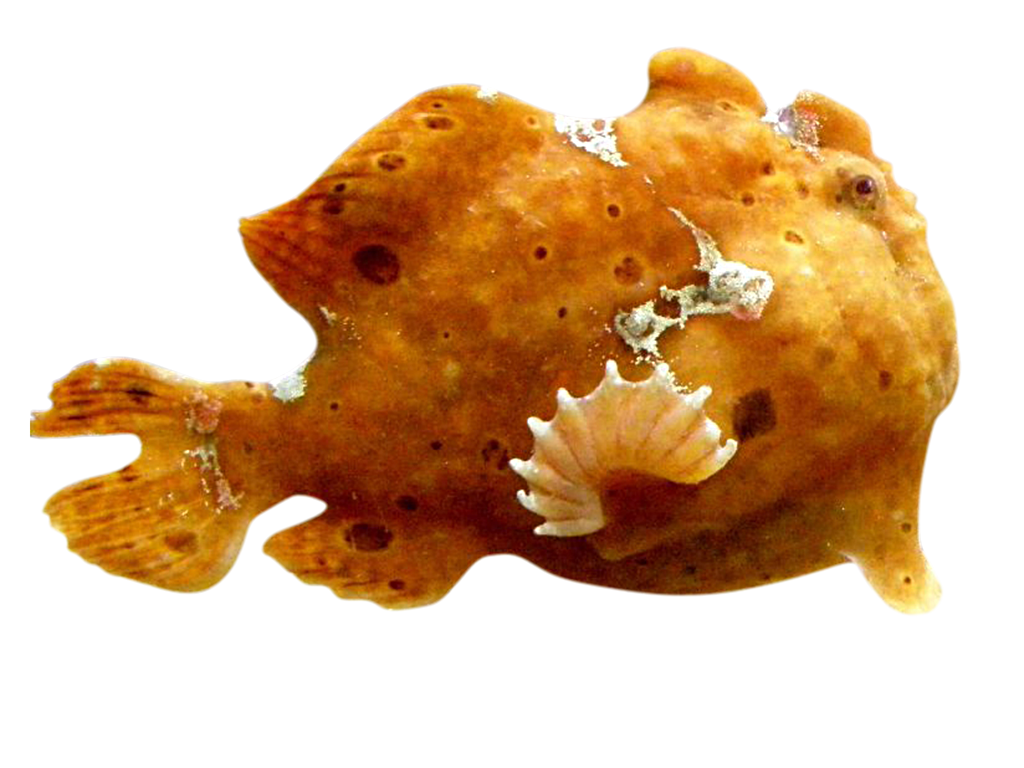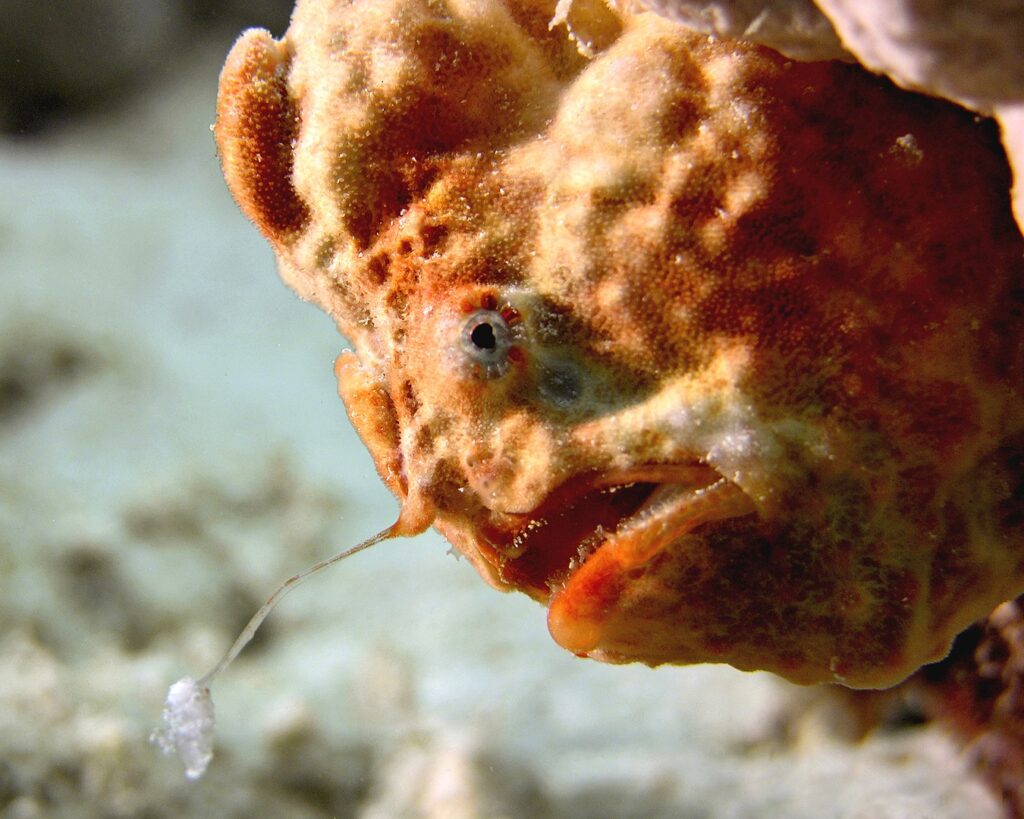Frogfish
Antennarius sp.

Fishing rod on the forehead and fins as paws
Frogfish is a family of fish, consisting of about 45 different species, related to anglerfish. The family includes the genus Antennarius, which includes 11 species. Some of the species can be very difficult to distinguish. All frogfish have fins that have been transformed into something that resembles legs and paws! With them, they can go for slow walks across the bottom. But perhaps the most spectacular feature of the frogfish is that the first dorsal spine is transformed into a kind of fishing rod! The spine is long and protruding, and at the end is a bait – a part of the fin that resembles a worm, a small fish or something else that the frogfish’s prey likes to eat.

Photo: Betty-Wills-CC-BY-SA
Waving the bait
Frogfish have several different hunting techniques, but the most common is to lie completely still, and wave the small fishing rod. The bait at the tip makes other animals interested, and when they get close enough, the frogfish opens its huge mouth. The suction force into the fish’s mouth is so great that everything loose that is nearby is drawn right into the mouth and swallowed. But the frogfish does not always need to use its bait to get food. Frogfish have incredible camouflage, and blend in perfectly with their surroundings. This means that shrimp and small fish can get really close without the bait unfolded. Sometimes the frogfish also actively sneaks up on its prey – with its transformed fins resembling legs.

Photo: Betty-Wills-CC-BY-SA
Squeezes water out through tubes
Frogfish live naturally in tropical coral reefs, where they are perfectly adapted to blend in. A frogfish that arrives in a new environment can change colour in a couple of weeks to adapt to the new location. The body can look like corals, rocks, algae, or sponges. It can be mottled, hairy, or lumpy. Instead of gill covers, which most fish have at their pectoral fins, the frogfish has small tubes leading to the gills. The tubes are used not only for breathing, but also for locomotion! The frogfish can suck in water through its mouth, and squeeze it out through the gill tubes. In this way, a jet stream is created that moves the fish forward.
Different species of frogfish have very different colours and appearances.
Photo: Steve-Childs-CC-BY
The pectoral fins of the frogfish are evolved into "paws".
Photo: Darijus-Strasunskas-CC-BY-NC
A frogfish fry.
Photo: Izuzuki-CC-BY-SA
A pink frogfish.
Photo: Nick-Hobgood-CC-BY-SA
A frogfish with pale colouration.
Photo: Izuzuki-CC-BY-SA
Frogfish can be very well camouflaged.
Photo: Steve-Childs-CC-BY
A well-camouflaged frogfish.
Photo: Bernard-DUPONT-CC-BY-SA
Distribution worldwide
In tropical and subtropical seas around the world.

Threat based on the Red List

Trade regulations
CITES: Ej listad.